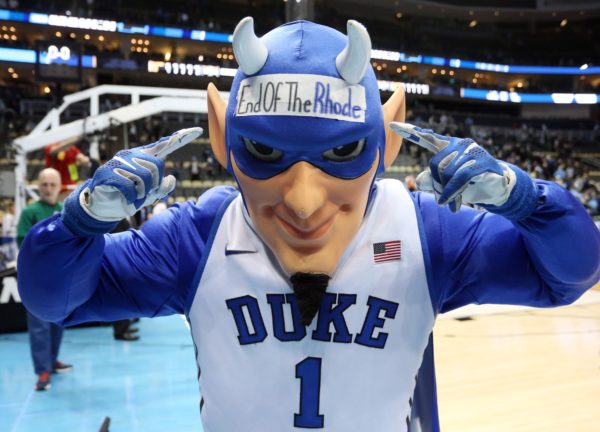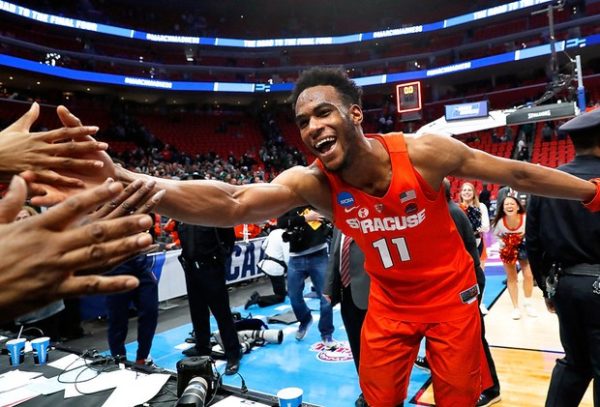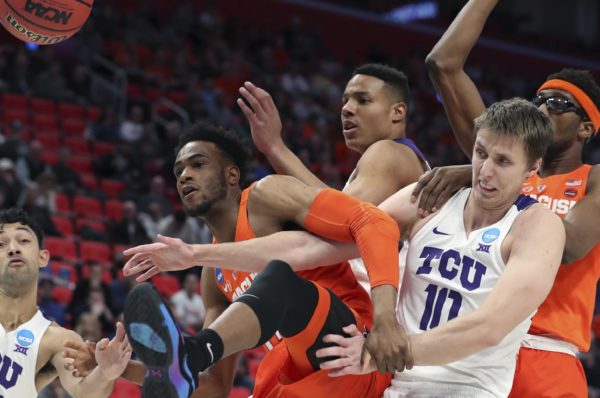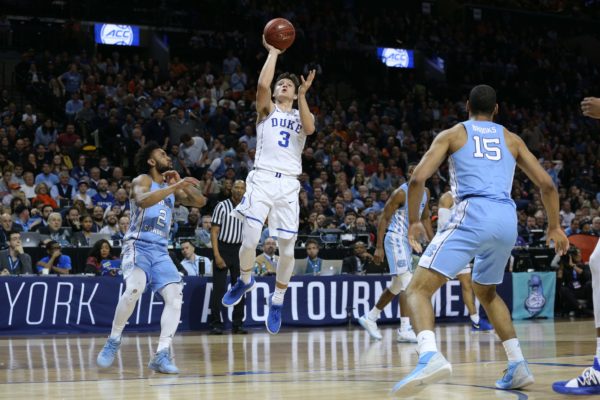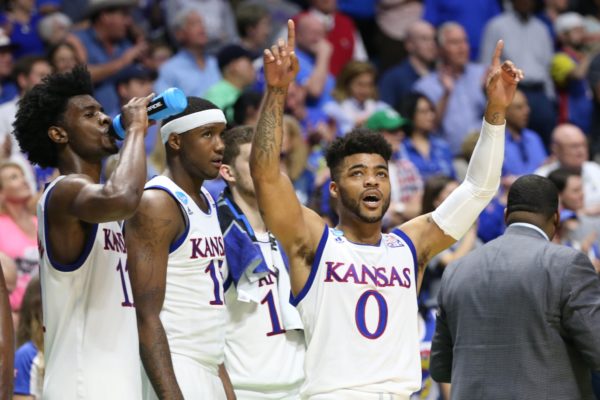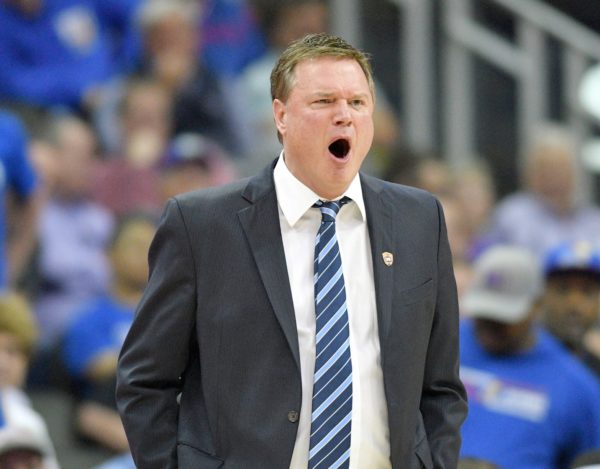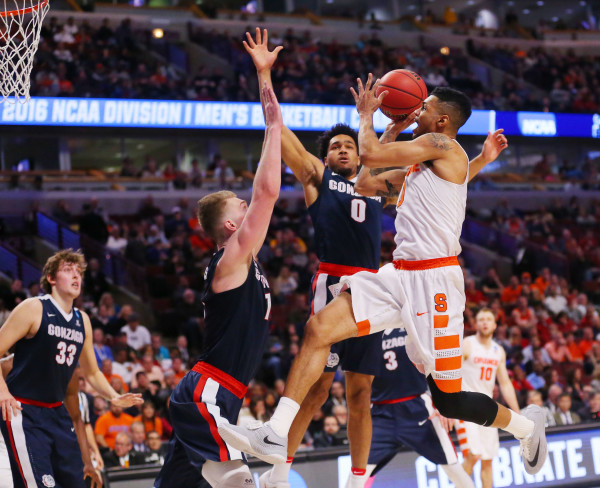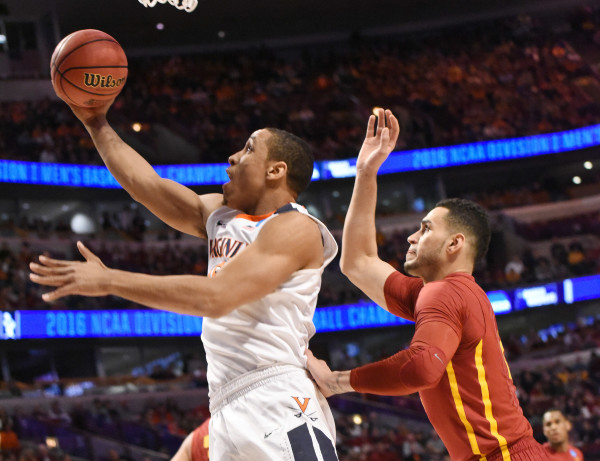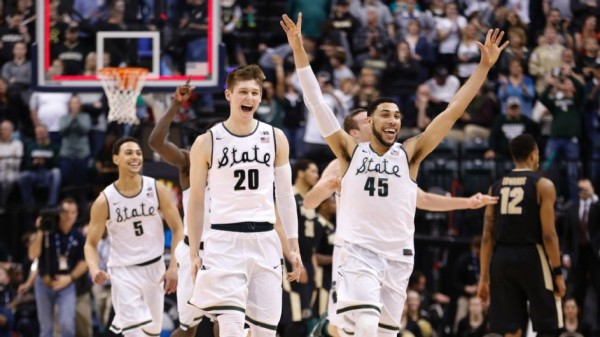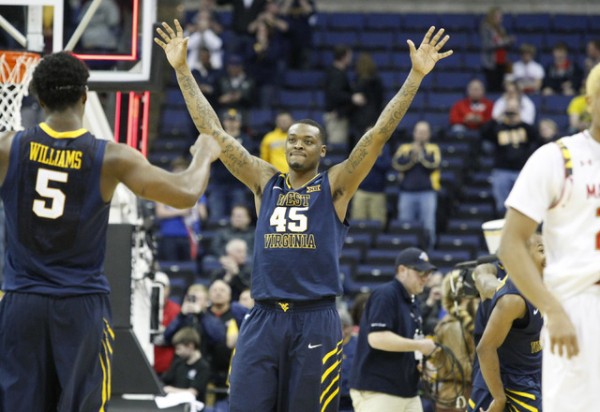NCAA Regional Reset: Midwest Region
Posted by Walker Carey on March 21st, 2018Rush the Court is providing comprehensive coverage of the NCAA Tournament from start to finish over the next three weeks.
Same Favorite: #2 Duke (28-7). The Blue Devils did nothing in the first weekend to lessen their status as the favorite to advance to San Antonio from this region — in fact, they probably strengthened their case with a pair of dominant victories over #15 Iona and #7 Rhode Island. Neither the Gaels nor Rams had enough size or talent to keep up with Duke last weekend in a pair of blowout wins. Mike Krzyzewski‘s club now advances to face ACC rival Syracuse in the Sweet Sixteen for their second match-up of the season — the two teams most recently met in February where Duke logged a 60-44 home victory. Given the versatile firepower that the Blue Devils have on the offensive end of the court along with Syracuse’s scoring issues, it is wise to presume another Duke victory and a slot in the regional finals against either #2 Kansas or #5 Clemson. Beating Duke is one thing and Syracuse is capable of doing so certain scenarios, but beating Duke when it is clearly firing on all cylinders is quite another story.
Horse of Darkness: #5 Clemson (25-9). No Sweet Sixteen team quite flew under the radar more than Clemson during the opening weekend. The Tigers kicked off tournament play with a comfortable and relatively drama-free 11-point victory over #12 New Mexico State, which had been a popular upset pick. While chaos engulfed the Second Round on Sunday, the Tigers brought out their big guns in a dominant 84-53 win over #4 Auburn. The Tigers’ Sweet Sixteen match-up with #1 Kansas is only daunting in name alone, as these Jayhawks are beatable. If Brad Brownell‘s group can carry over its first weekend efficiency to this week, it could have a chance at duplicating its intrastate rival’s run from last season and advancing to the first Final Four in program history.
Biggest Surprise (First Weekend): #3 Michigan State’s unexpected demise. Most national pundits initially viewed this region as either #2 Duke or #3 Michigan State’s to win. While the Blue Devils still have a shot to come out of the East region, the Spartans’ season ended in stunning fashion on Sunday in a ghastly 55-53 loss to #11 Syracuse. Michigan State slogged through the defeat by shooting just 25.8 percent from the field, 21.6 percent from three-point range, and committing 14 turnovers. Additionally, freshman star Jaren Jackson Jr. played only 14 ineffective minutes while Tom Izzo opted instead for sixth-year senior Ben Carter in his place down the stretch. To make matters even worse, Sparty took the loss at Little Caesars Arena in Detroit, a venue that is just 90 miles from the Michigan State campus in East Lansing.
Completely Expected (First Weekend): #2 Duke. There was never much doubt whether Duke was headed to the Sweet Sixteen last weekend. The Blue Devils impressively rolled through both Iona and Rhode Island without much tension — Duke won the two games by a combined 47 points. Marvin Bagley III and Gary Trent Jr. averaged 22.0 PPG and 17.0 PPG, respectively, while freshman forward Wendell Carter Jr. was a dominant presence on the defensive end of the court.





























